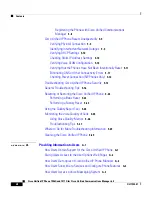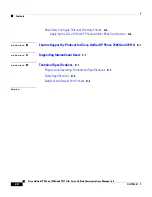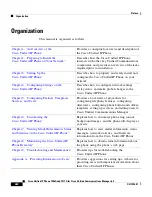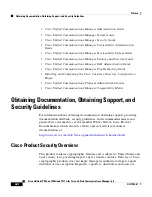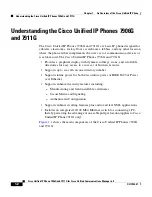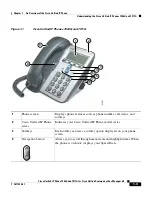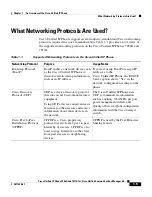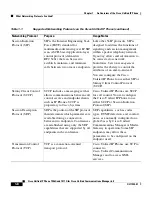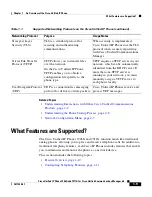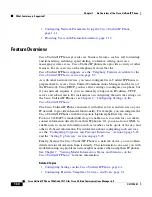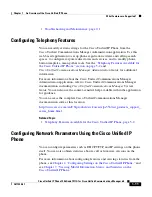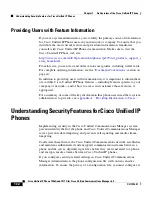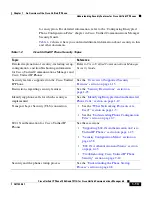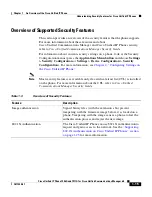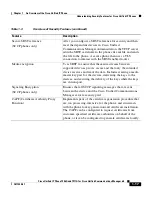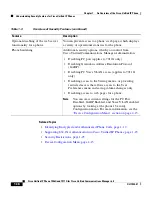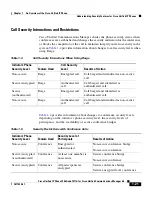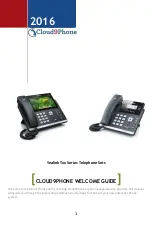
1-7
Cisco Unified IP Phone 7906G and 7911G for Cisco Unified Communications Manager 6.0
OL11954-01
Chapter 1 An Overview of the Cisco Unified IP Phone
What Networking Protocols Are Used?
Internet Protocol (IP)
IP is a messaging protocol that
addresses and sends packets across
the network.
To communicate using IP, network
devices must have an assigned IP
address, subnet, and gateway.
IP addresses, subnets, and gateways
identifications are automatically
assigned if you are using the
Cisco Unified IP Phone with
Dynamic Host Configuration
Protocol (DHCP). If you are not
using DHCP, you must manually
assign these properties to each phone
locally.
Real-Time Transport
Protocol (RTP)
RTP is a standard protocol for
transporting real-time data, such as
interactive voice and video, over data
networks.
Cisco Unified IP Phones use the RTP
protocol to send and receive
real-time voice traffic from other
phones and gateways.
Real-Time Control
Protocol (RTCP
RTCP works with RTP to provide
QoS data (such as jitter, latency, and
round trip delay) on RTP streams.
RTCP is disabled by default, but you
can enable it on a per phone basis
using
Cisco Unified Communications
Manager. For more information, see
the
“Network Configuration” section
on page 4-34
.
Secure Real-Time
Transport Protocol
(SRTP)
SRTP is available in addition to RTP.
SRTP adds security by encrypting
media streams during data transport.
For SRTP to work, the phone or
phones being called must also
support SRTP or else those phones
cannot decrypt the secure media
stream.
Table 1-1
Supported Networking Protocols on the Cisco Unified IP Phone (continued)
Networking Protocol
Purpose
Usage Notes
Summary of Contents for 7906G - Unified IP Phone VoIP
Page 4: ......

